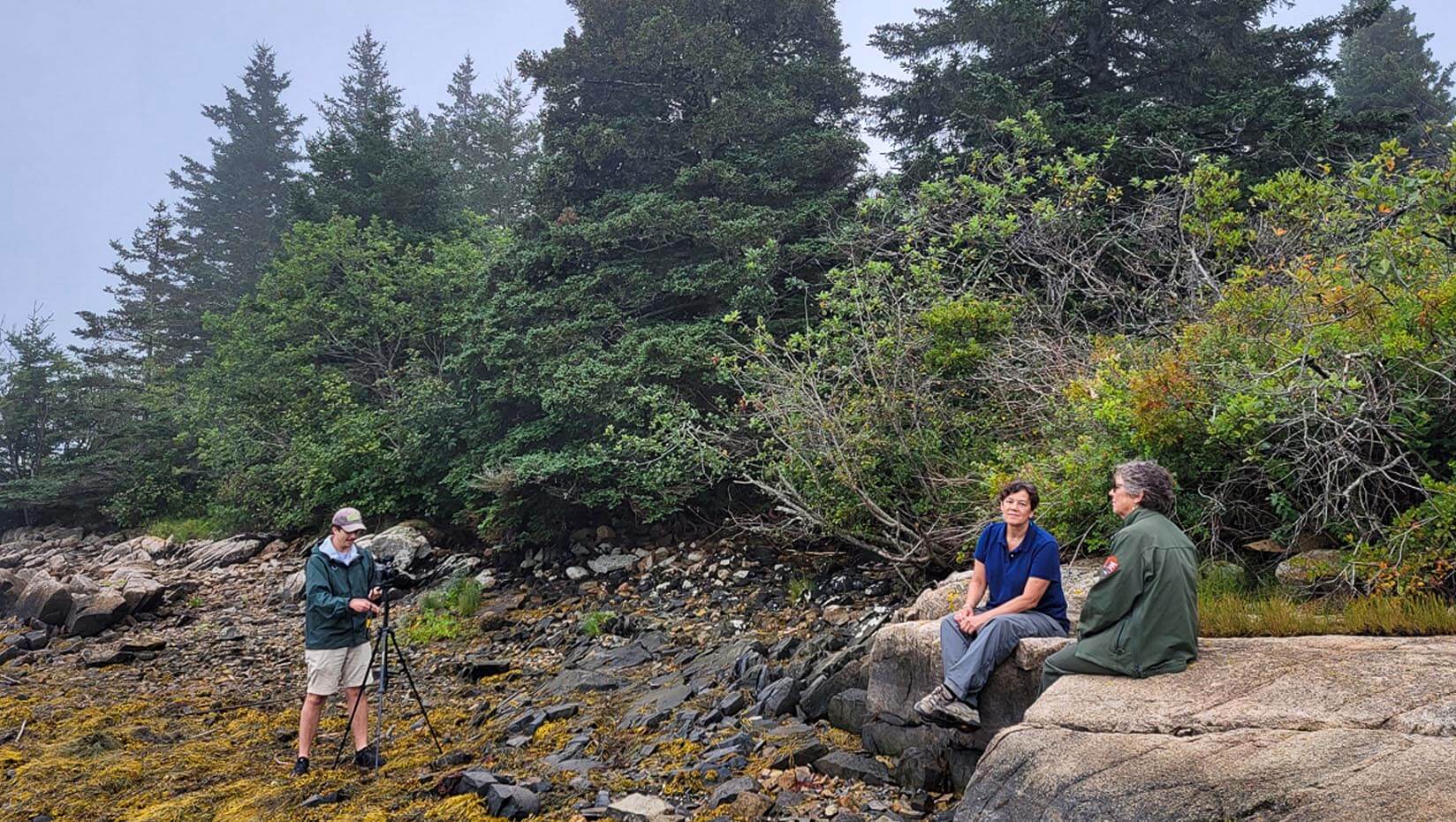
Where do the stories of Native Americans come from? Who tells them, and why?
Much of what Americans learn about Indigenous people of the continent is communicated by people who are not Indigenous. Euro-American archaeologists in particular have influenced how people think about Native Americans past and present.
A team of Wabanaki researchers and students led by professor Bonnie Newsom of the University of Maine is creating a framework for retelling stories of the past.
“We hope to change not only public perception, but also to reconnect Wabanaki people to our ancestral past through an Indigenous archaeology lens,” said Newsom, assistant professor of anthropology and a faculty associate with the Climate Change Institute at UMaine.
In an article published this month in a special issue of the open-access journal Genealogy, the research team members describe their work in Acadia National Park, where Newsom and graduate students Natalie Dana-Lolar from UMaine and Isaac St. John from University of New Brunswick have been reanalyzing archaeological collections from Wabanaki cultural sites. The sites are associated with coastal shell mounds, which are eroding rapidly as global warming causes sea level rise to accelerate.
“For over a century, North American archaeologists have operated under a model that assumes the right to excavate, research, and interpret Indigenous archaeological sites and associated material culture with little to no consultation with the people whose heritage these places represent. Although archaeology has undergone a transformation in the past 30 years that has reformed some of these practices, narratives of Indigenous pasts that objectify past peoples and impose Eurocentric interpretations on Indigenous heritage are slow to change,” they write.
They present the example of the “Red Paint People” story portrayed by 20th-century archaeologists as a distinct and separate “lost” people who inhabited the landscape that became Maine. Despite the fact that this portrayal is not Indigenous and has been rejected by many in the archaeological community, the myth lives on in the public imagination and interferes with Wabanaki efforts to articulate their own history.
As Wabanaki archaeologists, Newsom, Dana-Lolar and St. John instead want to refocus the story on the relationship between past Indigenous peoples and Wabanaki communities today. Using Indigenous language and community voices to describe and interpret collections of stone, bone and ceramic materials, they tell a story of continuous Wabanaki presence in the Acadia region.
Through their own personal stories as well as Wabanaki languages and world views, the team wants to address the gaps in knowledge on past Indigenous use of the park lands, and to use information acquired through their research as a basis for knowledge exchange and communication with Wabanaki communities, so that they are fully informed to participate in stewardship decisions for Indigenous heritage spaces in Acadia National Park.
“This paper represents a sea change in the way knowledge about archeological science is created, managed and disseminated,” said Rebecca Cole-Will, program manager for Acadia National Park. “I began my career as an archeologist studying at the University of Maine and conducting fieldwork in Acadia National Park many years ago. It is tremendously rewarding to now be involved with research here at Acadia National Park that centers Wabanaki community engagement and Indigenous science.”
In the 1990s, Indigenous archaeology was defined in the academic literature by George Nicholas and Tom Andrews as archaeology “with, for, and by” Indigenous peoples, but as Wabanaki archaeologists, Newsom, Dana-Lolar, and St. John have always operated within this framework intuitively.
“Our commitment to the well-being of our people, both forward and back, shapes not only the archaeological questions we ask but also why we ask them,” they write.
The special issue, Storying Indigenous (Life)Worlds, is edited by UMaine professor Darren Ranco and Jamie Haverkamp, a former UMaine Ph.D. student, now an assistant professor at James Madison University.
Their work is supported by a Second Century Stewardship award from Schoodic Institute, the National Park Service, and National Park Foundation.
Contact: Margaret Nagle, nagle@maine.edu and Catherine Schmitt, cschmitt@schoodicinstitute.org
